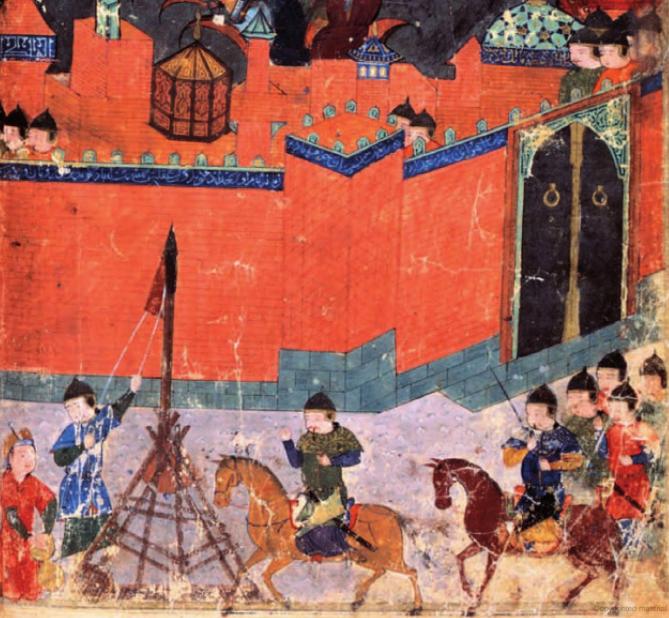Chinese Artillery Outside Baghdad January 20, 2018
Author: Beach Combing | in : Medieval , trackbackThe Mongol armies of the thirteenth century were among the most multi-ethnic in history. Koreans, Africans, Europeans and Persians fought together under the ‘prince of heaven’: a thuggish horse thief from the Steppes. Beach was recently particularly struck by one example of this that could stand for many less dramatic instances. When in 1258 Hulegu found himself before the walls of Baghdad, ready for one of the worst massacres of medieval history – it has been estimated that as many as a million died in the sack of the city, he relied on Chinese artillery. The sources for this are good. The Persian historian Juvaini tells us that the Mongols ‘sent to Khitai to fetch mangonel experts and naphtha-throwers; and they brought from Khitai 1000 households of Khitayan mangonel-men, who with a stone missile would convert the eyes of a needle into a passage for a camel.’ Here we see the genius of the Mongol conquerors who had carried out detailed censuses of northern China in 1252 and used these censuses to drum up an expert conscript army. The Chinese earned their derisory pay at Baghdad. They breached the wall at the Persian Tower. History doesn’t tell us what they did with the naphtha, but it must have been terrifying. This is supposed to be a near contemporary illustration of the siege. Sceptical.
There is also a neat bit of poetic justice that needs to be recorded here. China was largely conquered by the Mongols in the 1570s when key cities fell. Much of the Mongols success in siege was down to a new generation of mangonels that had been invented by two Muslim engineers from the newly conquered territories in the west: Isma’il and Ala al-Din. The lesson, in any case, is clear. Don’t build a city on the fringes of the Asian Steppes.
Other examples of very multicultural armies in ancient or medieval times: drbeachcombing At yahoo DOT com
29 Jan 2018: Stephen D writes ‘Not easy to beat Xerxes’ great host in the invasion of Greece: Herodotus book 7 (attached) names Persians, Medes, Cissians, Hyrcanians, Assyrians, Chaldeans, Bactrians, Scythians, Indians, Arians, Parthians, Chorasmians, Sogdians, Caspians, Sarangae, Pactyes, Utians, Mycians, Paricanians, Arabians, Ethiopians, Libyan charioteers, Paphlagonians, Syrians, Phrygians, Armenians, Lydians, Mysians, Thracians, Pisidians, Cabelees, Milyae, Moschi, Macrones, Mares, Colchians, and island tribes from the Red Sea. Not to mention the naval contingent: Phoenicians, Palestinians, Egyptians, Cypriots, Cilicians, Pamphylians, Lycians, Dorian and Ionian Greeks from Asia Minor and the Aegean islands, and Greeks from the Hellespont. Herodotus’ numbers may be believed by those who wish to.




